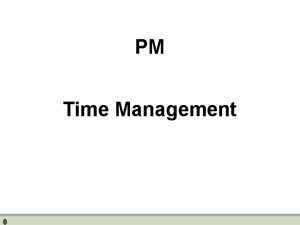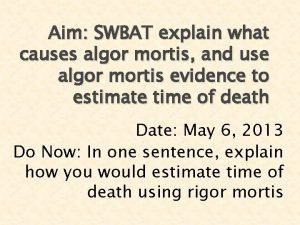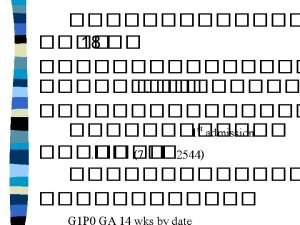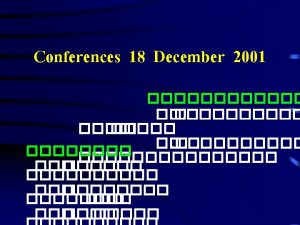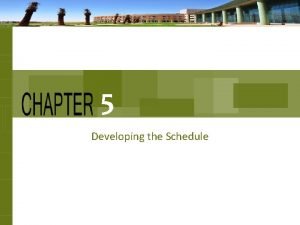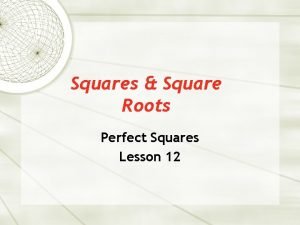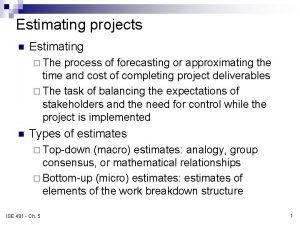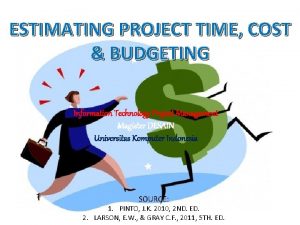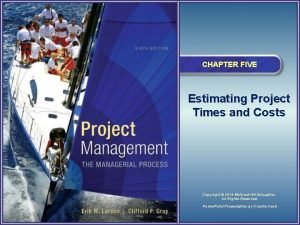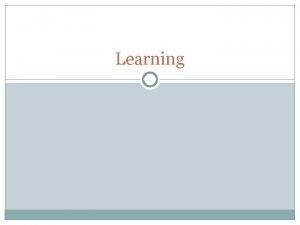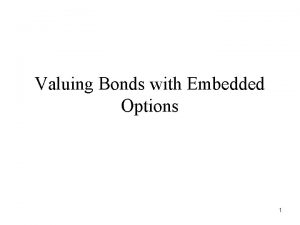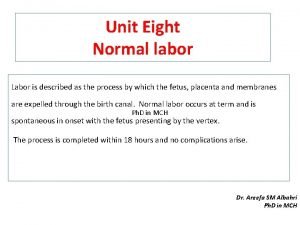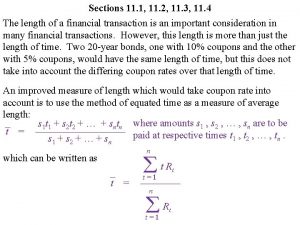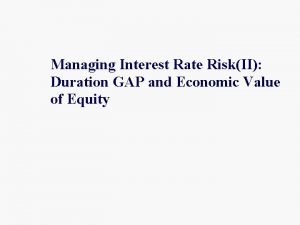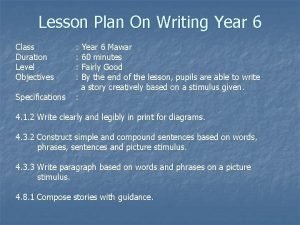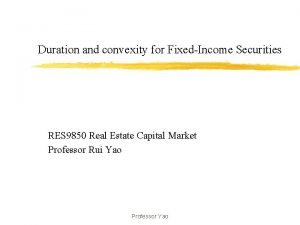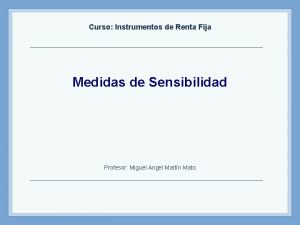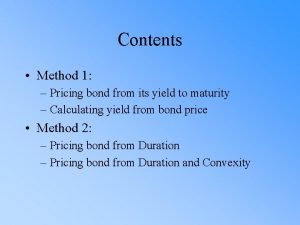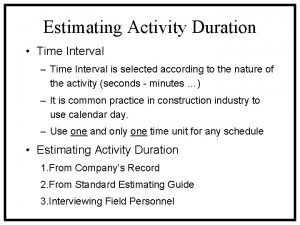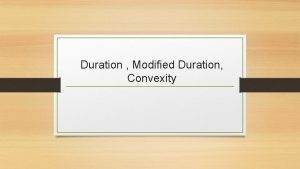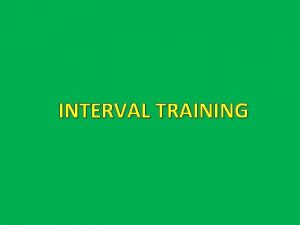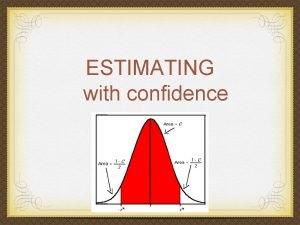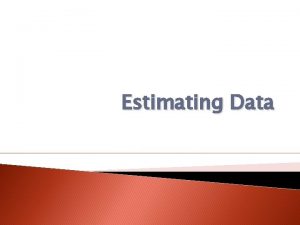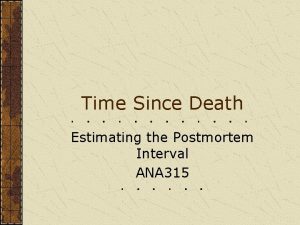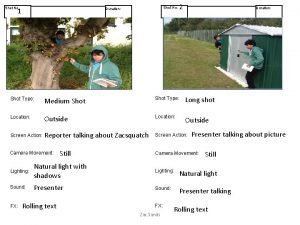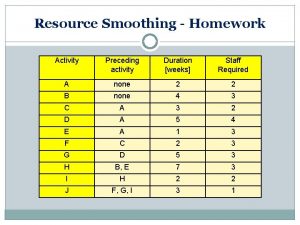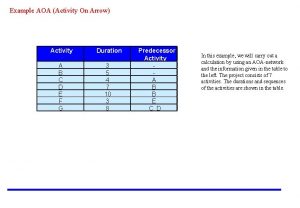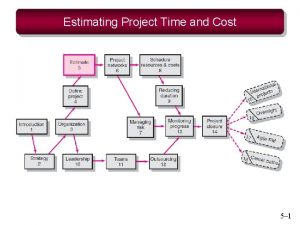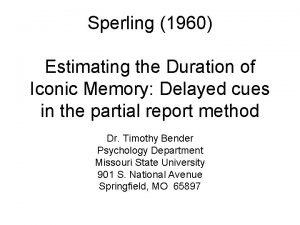Estimating Activity Duration Time Interval Time Interval is

























- Slides: 25

Estimating Activity Duration Time Interval ^Time Interval is selected according to the nature of the activity (seconds - minutes…) ^It is common practice in construction industry to use calendar day. ^Use one and only one time unit for any schedule. Prof. Awad Hanna

Estimating Activity Duration 1. From company’s record 2. From standard estimating guide 3. Interviewing field personnel. Prof. Awad Hanna

Weather and Contingency Allowance C Two approaches for assignment of weather allowance: 1. Add the Weather Allowance at the end of the project as a separate activity. 2. Add Weather Allowance to those affected by the weather. 3. Add weather allowance at the end of each construction segment (site preparation, foundation, … etc. ) Prof. Awad Hanna

Contingency items ^Other activities can be added to allow for contingency such as strikes Time Zero The close of the work period immediately preceding the start of the project. Prof. Awad Hanna

Scheduling Computation for Arrow Diagram Four time values associated with each activity: 1. ESD Early Start Date 2. EFD Early Finish Date 3. LSD Late Start Date 4. LFD Late Finish Date Prof. Awad Hanna

Early Start Date for an activity is the earliest point in time that any activity bursting from its beginning node can start. Late Finish Date is the latest point in time that any activity which merges at the activity’s ending node can finish. Prof. Awad Hanna

The Four Activity Times Arrow Diagram Notation i Activity Tij j (a) ESDij EFDij LSDij LFDij Activity ij Tij Time Available (b) Prof. Awad Hanna

Forward Pass Rule 1 The initial project event is assumed to occur at time zero Rule 2 All activities are assumed to start as soon as possible, that is , as soon as all the predecessor activities are completed. Rule 3 The early finish time of an activity is merely the sum of its early start date and the estimated activity duration. EFDij = ESDij + Tij Prof. Awad Hanna

Forward Pass Rules (cont. ) Rule 4 The late start date LSDij is found by subtracting the activity duration Tij from the late finish date LFDij LSDij = LFDij - Tij Prof. Awad Hanna

i Prof. Awad Hanna

i Prof. Awad Hanna

1. Total Float C Total float may be defined as that time span in which the completion of an activity may occur and not delay the termination of the project. TFij = LFDij - EFDij = LSDij - ESDij Prof. Awad Hanna

2. Free Float C Free float may be defined as the time span in which the completion of an activity may occur and not delay the finish of the project nor delay the start of any following activity. FFij = ESDjk - EFDij Prof. Awad Hanna

3. Interfering Float C That part of the total float which remains after free float has been deducted is the interfering float. C It may be defined as: The time span in which the completion of an activity may occur and not delay the termination of the project but within which completion will delay the start of some other following activity. INTFij = TFij - FFij Prof. Awad Hanna

4. Independent Float C The fourth float, independent float, is the amount of scheduling leeway of an activity that is independent of the early starts and late finishes of any other activity. It may be formally defined as: The time span in which the completion of an activity may occur and not delay the termination of the project, not delay the start of any following activity, and not be delayed by any preceding activity. Prof. Awad Hanna

i Prof. Awad Hanna

Critical Path Computations on the Network Prof. Awad Hanna

The Two Event Approach C Early Start Event In the forward pass, the maximum of the EFD values for all activities merging at a node is taken as ESD value for all the activities that burst from the same node. TEj = Max I (TEi +Tij) Prof. Awad Hanna

C For all activities entering node j, TEj is taken as the greatest sum of all activities merge to the node Prof. Awad Hanna

C Late Finish Event ^In the backward computations, the minimum of LSD valves is taken as the latest finish time for all activities that enter the node. TLj = Min I (TLi +Tij) Prof. Awad Hanna

C Start by the last activity, the TL for the next earlier node is taken as the minimum value of the late time event minus activity duration. Prof. Awad Hanna

Prof. Awad Hanna

Float Calculations From Event Times Total Float Tfij = TLj - TEi - Tij Example TF 2 -20 = TL 20 - TE 2 - T 2 -20 = 17 - 0 - 10 = 7 Prof. Awad Hanna

Free Float FFij = TEj - TEi - Tij Example FF 2 -20 = TE 20 - TE 2 - T 2 -20 = 14 - 0 - 10 = 4 Prof. Awad Hanna

Interfering Float INTFij = TLj - TEj Example INTF 2 -20 = TL 20 - TE 20 = 17 - 14 = 3 Independent Float INDFij = TEj - TLi - Tij Example INDF 2 -20 = TE 20 - TL 2 - T 2 -20 = 14 - 0 - 10 = 4 Prof. Awad Hanna
 Activity duration estimating
Activity duration estimating Algor mortis practice problems
Algor mortis practice problems Partubal cyst
Partubal cyst Miub gyne
Miub gyne The estimated duration for each activity must be the
The estimated duration for each activity must be the Is 256 a perfect square
Is 256 a perfect square Sat test time duration
Sat test time duration Ehud nakar
Ehud nakar Estimating project time and cost
Estimating project time and cost Normal vs expedited costs
Normal vs expedited costs Estimating project time and cost
Estimating project time and cost Melodic interval adalah dua buah nada yang
Melodic interval adalah dua buah nada yang Fixed vs variable reinforcement
Fixed vs variable reinforcement Fixed variable ratio interval
Fixed variable ratio interval Bonds with embedded options
Bonds with embedded options True labor contractions
True labor contractions Convexity formula
Convexity formula Equity duration
Equity duration Duration of lesson plan
Duration of lesson plan Continuous subcutaneous insulin infusion
Continuous subcutaneous insulin infusion Bono bullet ejercicios
Bono bullet ejercicios Duration of portfolio
Duration of portfolio Modified duration
Modified duration Epicardium
Epicardium Duration de un bono
Duration de un bono Convexity duration formula
Convexity duration formula
